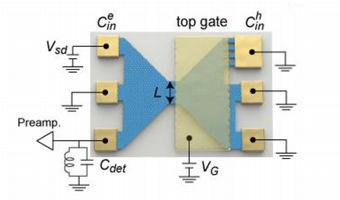Preden Roulleau
Shot noise generated by graphene p-n junctions in the quantum Hall effect regime
N. Kumada1,2, F. D. Parmentier2, H. Hibino1, D. C. Glattli2, and Preden Roulleau2
1NTT Basic Research Laboratories, NTT Corporation, 3-1 Morinosato-Wakamiya, Atsugi, Kanagawa, Japan.
2Nanoelectronics Group, Service de Physique de l’Etat Condensé, IRAMIS/DSM (CNRS UMR 3680), CEA Saclay, F-91191 Gif-sur-Yvette, France.
Unique transport properties of Dirac Fermions combined with quantum Hall physics lead to the mixing of chiral bipolar edge modes propagating along a graphene p-n junction, resulting in the quantization of the junction conductance at unusual fractional values. Here, we report on the experimental investigation of shot noise generated by such a p-n junction. Our results indicate that an out-of-equilibrium energy distribution arises in the junction due to mode mixing. We also show that this energy distribution relaxes towards a thermal equilibrium through interactions with external states, on a length scale of 16 μm. In shorter junctions, our findings are consistent with previous theoretical predictions, suggesting that a graphene p-n junction could be used as a beam splitter for electrons and holes.

